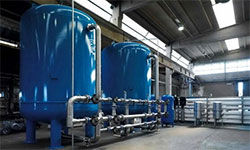SEWAGE TREATMENT PLANT MANUFACTURERS IN CHENNAI
Sept 05, 2023
How to Maintain STP Plant?
To guarantee your STP plant works productively, you should give intermittent maintenance and inspect your system occasionally. Any pass or inability to do so may prompt unsalvageable harms ready to go and, surprisingly, extremely durable loss of specific parts. Maintaining a STP plant isn't intense. You must be customary with investigation. After seeing a shortcoming or harm in the system, you should follow up on the issue quickly to save the plant from unsalvageable harm. There are a variety of elements liable for the smooth working of a STP plant. Allow us to direct you to the simple and compelling strategies to maintain your STP plant.
Components of STP Plant
STP plants are spots where the sewage from homes and businesses is gathered and treated prior to being delivered into a stream. A STP plant incorporates a septic tank, a clarifier, a treatment plant, a slime brace, and sand filters. A septic tank is the initial segment of the STP system that gathers all the crude sewage from homes and businesses.
The crude sewage then goes through the clarifier, where any solids are isolated from fluids. The explained fluid then, at that point, streams to the following phase of the STP system called the "treatment plant." In the treatment plant, chemical processes, including sanitization, kill unsafe creatures or eliminate them from sewage water. Sludge support helps in eliminating with gritting that might stay in sewage after it has been dealt with. Sand filters help in eliminating particles.
Difficulties of maintaining STP Plant
In a sludge treatment plant, muck is constantly delivered. The slime is normally discarded as wastewater after it has been dealt with. The management of STP can be intricate on the grounds that numerous viewpoints should be dealt with. The issues that emerge in STPs are scent, flood, and scraped spot. The scraped spot in the system was brought about by the sand particles, which were excessively coarse or sharp or both. A few plants likewise experienced storms when they needed more space for all the ooze they created. Presently let us comprehend how these sludge issues can be avoided in a STP plant.
Prevent Sludge Problem
Sludge is an issue that plagues STP plants establishes from one side of the planet to the other. Many variables can cause sludge issues. The most widely recognized reason for sludge is a lacking screening of solids. This prompts a lot of solids gathering in the gushing (a fluid that leaves the plant). The most effective way to prevent sludge problems in a STP plant is to ensure you are satisfactorily screening your solids prior to sending them down the line.
It is a wastewater side-effect of STP plants. The sludge issue in the sewage plant is caused because of the great weakening proportions. The sludge aggregates in the tanks and can cause flood, pump breakdowns, and stopped up pipes. A sludge problem is one of the most well-known sorts of issues that STP plants face. Ooze is a sort of solids that settles down in the lower part of Maintaining a STP plant isn't intense.










